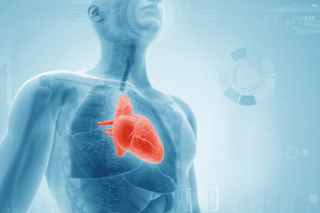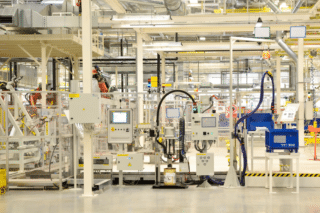The digital factory idea is now mainstream, but there is a big gap between where manufacturers are and where they want to be. Research from PWC indicates that 91% of industrial companies are investing in digital factories, but only 6% claim to be fully digitized. IoT data could hasten the transition.
Creating a virtual simulation of physical processes is part of the digital factory concept. Digital twins help plan, design and construct factory buildings and infrastructure, and improve production assets and products.
Using Real World Data
Software company PTC specializes in digitization of factories and processes. Jean-Philippe Provencher, vice president for manufacturing strategy, says simulation and modeling allow companies to optimize processes in the digital world before creating them physically, saving time and cost. Meanwhile, the Internet of Things (IoT) allows connected sensors to provide data on physical conditions like location, temperature and humidity, improving the value of digital models.
Instead of only simulating performance based on testing and assumptions, we can take real-world data and use that as input into the digital model. That next step offers real benefit in terms of model accuracy.
Provencher says the more accurate process models become, the easier it is to improve asset use, boosting return on existing investments and avoiding buying new equipment.

IoT data helps businesses understand how equipment is actually used, rather than how they think it might be used. Provencher explains that one PTC client found unplanned downtime was not due to equipment, but the way production and staffing was organized:
If an operator is not available to start the machine, it’s not a failure. It’s the way the work is organized. By looking at the data, you no longer need to interview everyone in operations. You can find out [what happened] by measuring lots of little things [using IoT devices].
Provencher says process simulation is already well advanced in the food and beverage sectors where there is already significant automation. Regarding the manufacturing of end products such as mobile phones— where processes are more complex and less automated, the digital twin concept has not been adopted to the same degree.
Using IoT Data
Dale Berry is senior technical director of the Dassault Systèmes simulation product, Simulia. He agrees real reference data from IoT devices improve digital models, help predict maintenance and plan downtime.
When data is coming in, you can see if the model was able to predict what has happened. Then you can improve the model.

Such data improves a model’s predictive ability in unforeseen circumstances. They might be able to predict how long machinery could run safely after an accident, given data from similar scenarios.
The questions are, How much longer can we keep it running safely? Can we make it to the next maintenance cycle? The model promises to answer those questions.
For Alan Griffiths, industry analyst with research firm Cambashi, one of the main challenges for businesses using such data to enrich models is the sheer number of IoT platforms available.
At the moment, if you want to buy an IoT platform, there are 350 on the market. Because the prospect of such a complex market is so daunting, one of the trends we see is people going to their existing suppliers to provide a platform.
Ask Yourself
Using IoT data could offer benefits such as reducing time to market, removing bottlenecks, cutting downtime, increasing flexibility and lowering costs. They all sound like good reasons for investment, but businesses should be very clear about their goals, Alan Griffiths adds.
Ask yourself, Do we have a problem? Or, What is the big opportunity? You have to have a business case for the investment.

Paul Homan, IBM UK CTO for industrial sectors, says that organizations sometimes focus on the efficiency of one specific machine or process. The greater benefit of using IoT data is to create digital modeling of a broader set of processes.
Organizations that go beyond the production line by reaching back to inbound logistics, as well as the buffer inventory they hold before handing over to customers, understand that the value of modeling is more than facilities becoming efficient in their own right. But people tend to focus on machine uptime and see that as a measure of profit, rather than throughput, wait times and use of materials.
According to Homan, companies with multi-site production are likely to see the benefit of modeling on a grander scale.











